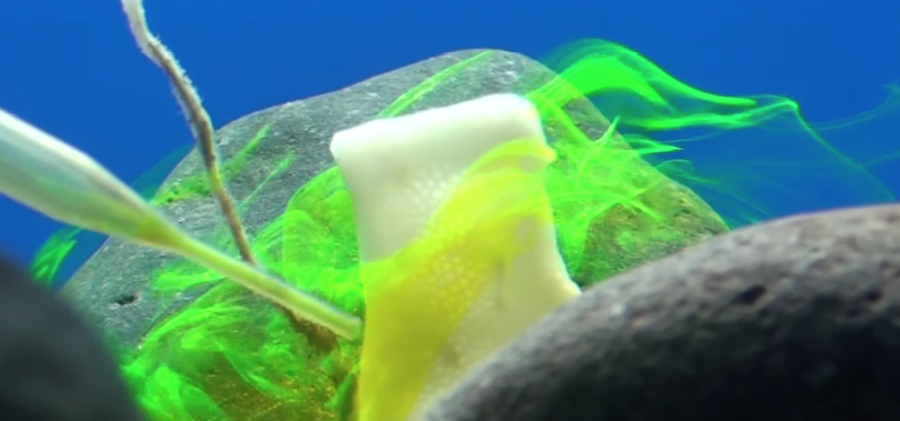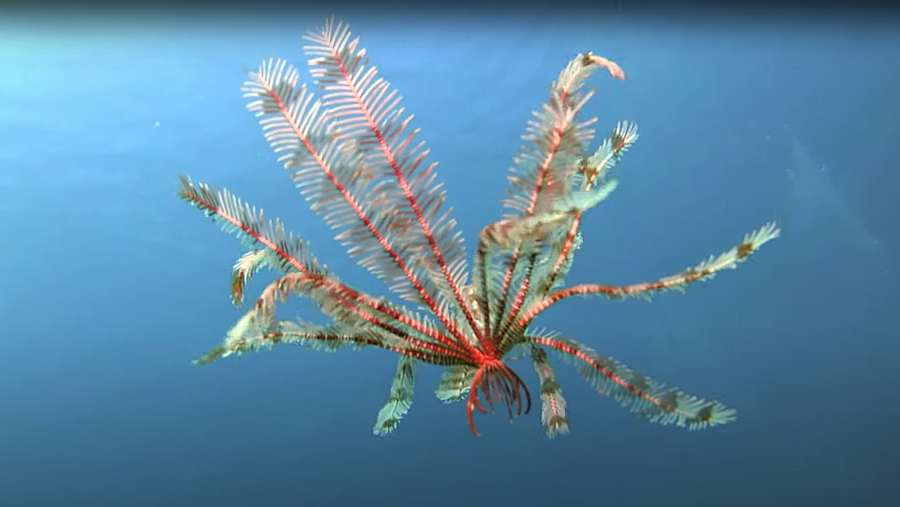Feather stars might look like colorful swimming ferns, but they’re marine animals, echinoderms that are related to sea stars, brittle stars, sea urchins, and sea cucumbers. As their name suggests, feather stars have feathery arms that capture plankton and other small bits of food that drift by.
And like sea stars, if they lose an arm, they can regrow it. In fact, feather stars in high-temperature environments regrow their arms faster than those in the temperatures of their current habitats. According to National Geographic, “limb regeneration may be the reason why these animals have been, and continue to be, so successful after 200 million years of existence.”
Marine ecologist Angela Stevenson of the University of British Columbia studies how glass sponges and feather stars are affected by human-caused environmental factors. Stevenson also shares with Nat Geo that she suspects that ocean warming “might be harming predators that would normally eat baby feather stars, allowing more stars to reach adulthood.”
This Beaty Museum video, one in their Researchers Revealed series, shares more about her work:
“I have two different projects, one on glass sponges where I study their sensitivity to climate change. For that project, I go out to Howe Sound, collect the sponges, and bring them up to the lab where I study them for several months. At the end of the experiment, after about five months, I collect tissue samples and do molecular and microbial work on this tissue sample.”
“The second project is research in mesophotic environments (30-120 metres deep). I use feather stars to look at patterns across that depth gradient and how they compare with the shallow waters. I primarily do all of my work at the bottom of the ocean while scuba diving…
“Feather stars and glass sponges help maintain biodiversity, and today humans continue to impact their environments. We’re trying to understand how their interactions with animals in their environment might help them resist any of that change in the future.”
Visit the Beaty Museum on YouTube and Instagram.
And for more feather star action, watch this video filmed off the coast of Okinawa, Japan:
Watch more videos of echinoderms and sponges, including:
• Feather stars and their animal invaders
• Ocean sponges have incredible filtering power
• How do sea stars walk and bounce?
• Sea cucumbers are underwater vacuum cleaners
Curated, kid-friendly, independently-published. Support this mission by becoming a sustaining member today.




